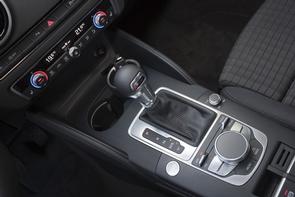Manual vs Automatic Cars: which is better?

Manual or automatic: it’s a long-running debate among the petrolhead fraternity, so we try to settle the argument by choosing a winner.
What’s the Difference?
Strictly speaking, and talking in the broader strokes, a manual car will have a clutch pedal, while an automatic car will not. So, in the driver’s footwell of a manual car, there will be three pedals, and in any other vehicle there will be only two. We could say a manual is a car in which you change gear yourself, but there has been a trend for paddle-shift automatic gearboxes in performance cars in recent years – in which the driver can choose when to switch gears in the transmission, but there’s still no clutch pedal down in the footwell.
Different Types of Automatics
Traditionally, an automatic had a torque-converter as its method of transferring power from the engine to the gearbox and then the driven wheels. These were often known as ‘slushboxes’ informally and had a distinctive, slurring tone to gearshifts. However, in recent years, the advent of the dual-clutch automatic gearbox has given rise to an increasingly popular derivation of the automatic gearbox, while the Continuously Variable Transmission (CVT) is used on many eco-oriented vehicles for its efficiency.
Dual-clutch gearboxes, incidentally, are known by many in-house brand names, including DCT, DSG, S tronic, PDK, 8G-DCT, EDC and more. It’s actually an old technology, invented in the late 1930s by a French engineer for use in a Citroen Traction Avant, but it was Porsche’s motorsport department in the 1970s that first really got to grips with the idea (calling it PDK, the three-letter abbreviation for the German phrase that translates directly as ‘Porsche Double Clutch’). This, in turn, meant that ultimately the first mass-produced road car to gain a dual-clutch gearbox, in this case called DSG, was 2003’s Volkswagen Golf R32. VW benefitted from the tech first, because it owned (and still owns) Porsche. This late introduction into road cars is why it feels like a modern invention, even though it was first mooted 82 years ago.
Which Is Best: Manual or Auto?
Driving purists will tell you a manual is always the best. It gives more interaction and more ‘reward’ to its driver than an automatic of any type can, even a paddle-shift equipped dual-clutch unit, simply through the act of stirring a lever and depressing a pedal every time you need to change up or down a gear. And there’s certainly a lot of fun to this act. On the right road. In the right car. In precisely the right circumstances.
But driving purists are a minority. In reality, that most automatics these days offer the best of both worlds – including a ‘manual’ mode in most instances – and they are incredibly refined means we’re going against popular consensus here. You might be on some remote road somewhere one day in the future, wishing you had three pedals and a H-gate gearbox at your disposal, but this is an incredibly unlikely scenario in the modern driving climate and the chances are much more likely that you’re actually going to be snarled up in heavy traffic, inching around at walking pace and thanking your lucky stars you don’t need to be pumping a clutch pedal incessantly with your left leg while you edge along at 8km/h.
WINNER: a good automatic. Full torque converter or dual-clutch, it doesn’t bother us. For two per cent of your driving life, you might yearn for a manual instead of one of these two automatic gearboxes. But for the other 98 per cent of the time, you’ll be immensely glad you’ve only got two pedals in your footwell, rather than three.
Oh, and electric cars – our longer-term driving future – are NEVER manuals. They use single-speed reduction gears, so in the 2030s and beyond you’re all going to have to drive autos anyway. Might as well get used to the transmission now…
Carzone - 23-Mar-2021


